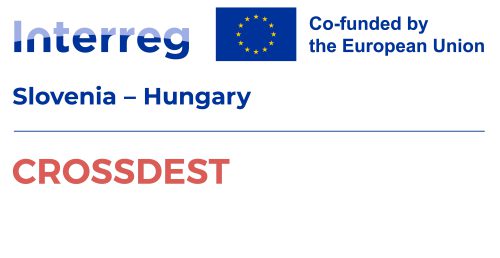Project overview
Common Challenges
In Slovenia, currently 90% of all guest nights are reported in destinations certified by the Green Destinations (GD) system accredited by the Global Sustainable Tourism Council (GSTC), and an increasing number of sustainable certified attractions and tourism service providers are available within the Slovenia Green program. Today, sustainability nationally influences the mindset of every player in tourism, including the visitors who come here. In Hungary, by contrast, sustainable tourism development is still in its infancy. However, international pressure is increasingly felt, as the absence of sustainability certification recognized by the GSTC leads to a decline in the region’s competitiveness, a challenging issue to overcome as it requires simultaneous attention to public mindset shaping, the development of sustainable systems, improving the sustainability of individual providers, and the transformation of the destination brand. Today, more than two-thirds of the world’s travelers are seeking sustainable destinations. However, the Slovenian-Hungarian border region can only meet this condition as a unified, sustainable destination if Hungarian destinations also achieve GSTC sustainable certification, and as sustainable destinations cannot exist without sustainable providers, more attractions and tourism services also need to acquire sustainable tourism certification. In parallel, a cross-border tourism network will be established, whose members recommend each other and develop joint tourism products under a unified sustainability brand umbrella.

Comprehensive Goals and Solutions
The four municipalities related to this project are each internationally known in their own right, with a continuously changing target audience post-COVID. However, to become a unified, cross-border destination where a returning clientele with longer stays is developed thanks to the cooperation of the project partners, the following problems need to be addressed:
- Significant preparedness differences in terms of sustainability and accessibility as two basic values
- The lack of a comprehensive quality management program that would provide uniform services taking international standards into account for target groups (e.g., families, pet owners, cyclists, seniors)
- Due to these deficiencies, there is no uniform and complete information system that would provide up-to-date and personalized information about the tourism offerings of the region on both sides of the border, including local products
- Since tourism players do not know each other and local producers, the offerings of individual municipalities do not include the rest of the region’s players, nor can they widely build on the advantages of the circular economy.
Main Outcomes of the Project
Building on the good practices of Murska Sobota, the others will also obtain the GD certification, while for Murska Sobota, reaching at least the silver level is the goal. Each of the four locations will implement a pilot program aimed at strengthening regenerative tourism. The developed programs will be transferable to one another. As a result of the project, at least 20 attractions and at least 40 providers will be prepared to obtain the GD Good Travel Seal certification. A pilot program supporting the circular economy will be completed, which can be used by all four municipal partners. A unified quality management and monitoring system will be established, in line with international standards and focusing on sustainability.
Methodology, Cross-Border Nature
Building on the GD standards, every partner will work according to a uniform methodology. Innotime will develop the digital platform that allows every partner to continuously monitor their results and the sustainability index of their own destinations and tourism services. An e-learning material, accessible to all tourism providers in the region, showcasing the criteria for sustainable tourism and the values of the border region will be completed. Through the provider training program, regional tourism providers will be prepared for international certification within a unified mentor program, and local producers will also be involved on both sides of the border within the framework of the pilot program supporting the circular economy. By the end of the project, the municipalities will be able to provide uniform horizontal quality services, and the attractions and tourism providers will be able to develop cross-border new products with knowledge of each other’s services.
Novel Elements
Currently, there is no monitoring system in Europe capable of simultaneously measuring the sustainability and accessibility index of tourism providers, destinations, guests, and the results of circular economy management. The unified monitoring system will provide an answer to this.
Project achievements and materials
In this section you can find useful materials related to the project.
- File 1
- File 2
Project duration
Project start date:
1.11.2024
Project end date:

